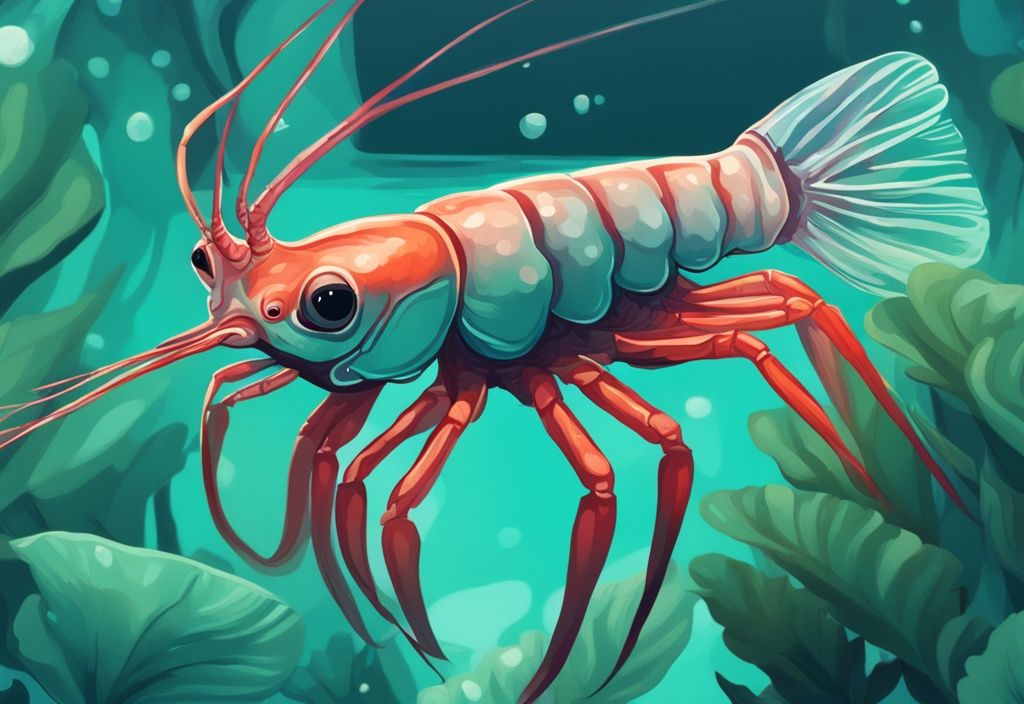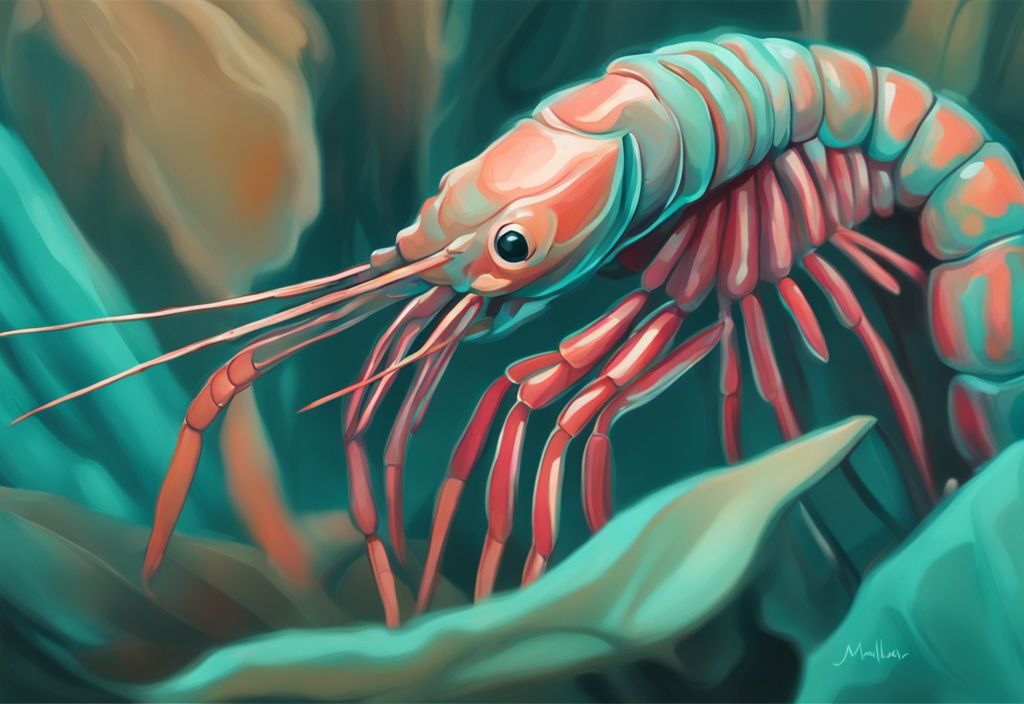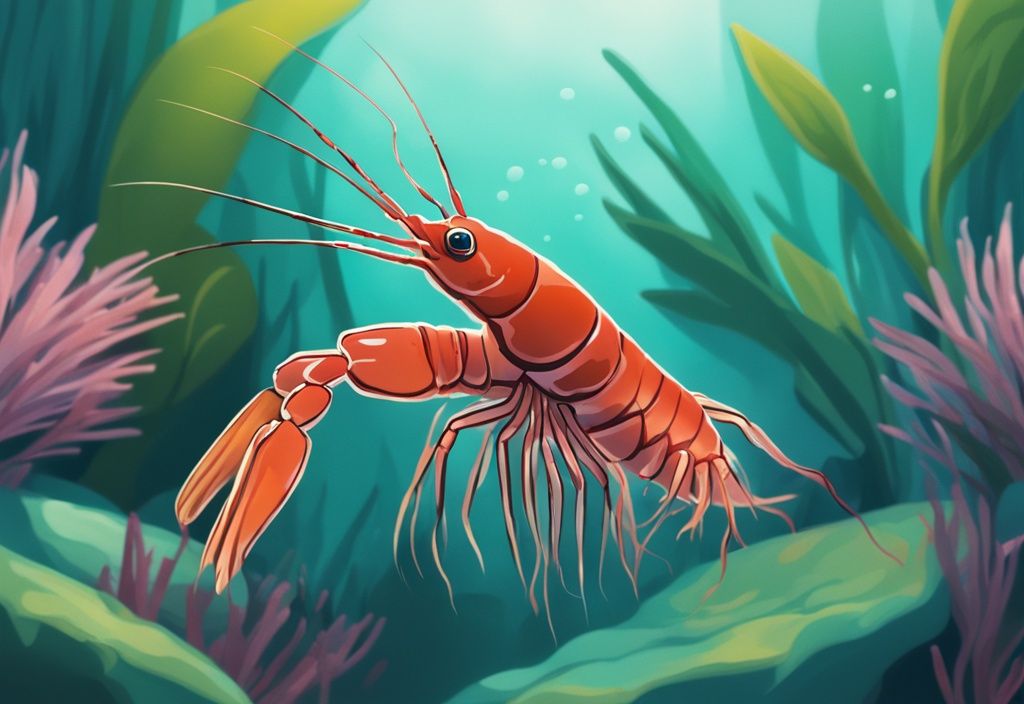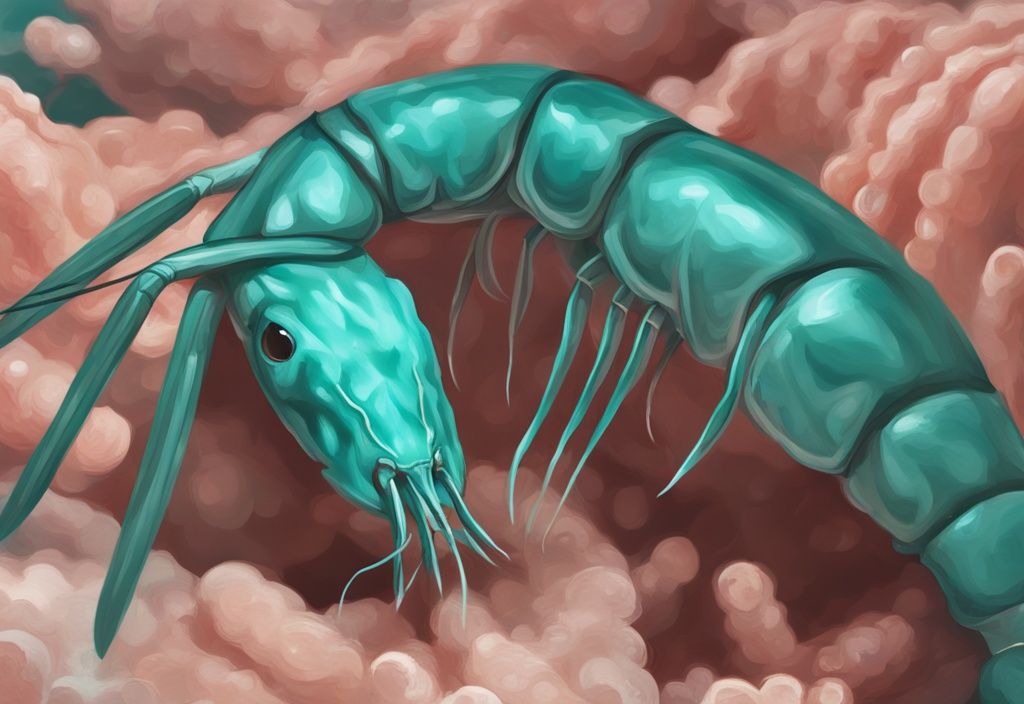Introduction to Malawa Shrimp
Picture this: a kaleidoscope of colors and graceful movements turning your aquarium into a living masterpiece. Meet the Malawa Shrimp, a delightful species that has captured the hearts of aquarists with its resilience and allure. But what makes these tiny wonders so extraordinary?
Hailing from the lush waters of Sulawesi, Indonesia, Malawa Shrimp are renowned for their adaptability and ease of care, making them a perfect choice for both novice and seasoned aquarium enthusiasts. Their subtle beauty and fascinating behavior add a unique dynamic to any aquatic environment.
This guide will delve into the essentials of Malawa Shrimp care, from setting up the ideal tank and understanding their dietary needs to mastering breeding techniques and ensuring harmony with other tankmates. Whether you’re enhancing your aquarium’s biodiversity or simply intrigued by these captivating creatures, this guide will equip you with the knowledge to thrive in the world of Malawa Shrimp care.
Introduction to Malawa Shrimp
Malawa Shrimp are a fascinating addition to the aquarium hobby, known for their resilience and adaptability. Originating from the Sulawesi Islands, these shrimp have captivated aquarists with their unique characteristics and ease of care. This section delves into their origins and significance within the aquarium community.
Origin and Significance in Aquarium Hobby
Malawa Shrimp, scientifically recognized as Caridina pareparensis and Caridina parvidentata, hail from the enchanting Sulawesi Islands in Indonesia. Introduced to the US and European markets in 2008, they remain somewhat of a hidden gem. Despite their underrated status, these shrimp have carved a niche among aquarists due to their remarkable hardiness and adaptability.
Imagine a shrimp that can thrive in a variety of water conditions—Malawa Shrimp are just that! They’re ideal for beginners seeking to enhance their aquarium experience without the complexities often associated with more delicate species. Their easy care requirements and resilience make them a popular choice for newcomers, offering a rewarding and low-maintenance addition to any freshwater tank.
In essence, Malawa Shrimp are like the reliable friends of the aquarium world. They bring vibrancy and life to tanks while requiring minimal fuss, making them a delightful choice for anyone looking to create a balanced and sustainable aquatic ecosystem.
Key Characteristics of Malawa Shrimp
Malawa Shrimp, scientifically known as Caridina pareparensis and Caridina parvidentata, are a charming addition to any aquarium. Imagine a tiny, semi-transparent canvas displaying a captivating array of colors—reddish, rusty, brownish, bluish, and dark tones. These hues make them a visual delight, akin to a living, breathing piece of art in your tank.
Reaching a modest size of 2.5 to 3 cm (1.0-1.2 inches), Malawa Shrimp have a lifespan of 1.5 to 2 years. This makes them a relatively long-term companion for aquarists. Their peaceful and non-territorial nature is one of their most endearing traits. Unlike some other shrimp species, Malawa Shrimp do not interbreed with other dwarf shrimp. This allows them to coexist harmoniously in diverse aquatic environments, fostering a balanced ecosystem. Their excellent algae-eating capabilities are a boon for maintaining clean and healthy aquariums. For more tips on aquarium maintenance, check out our guide on how to move a fish tank. Think of them as your tank’s diligent custodians, efficiently controlling algae growth and contributing to the overall well-being of the aquatic environment.
Despite their outgoing behavior and tendency to swim openly, which adds a dynamic touch to the tank, this characteristic also makes them vulnerable to larger fish. It’s crucial to carefully consider their tankmates to ensure their safety.

Overall, Malawa Shrimp are a delightful and beneficial addition to any freshwater aquarium, offering both aesthetic beauty and practical advantages. Their presence not only enhances the visual appeal but also supports a thriving aquatic ecosystem.
Setting Up the Perfect Tank for Malawa Shrimp
Creating an ideal environment for Malawa Shrimp involves careful planning and attention to detail. From choosing the right tank size to selecting suitable substrates and filtration systems, each decision plays a crucial role in ensuring the well-being of these fascinating creatures. This guide will walk you through the essentials of setting up a thriving habitat for your Malawa Shrimp.
Recommended Tank Size and Conditions
Selecting the right tank size is the first step in creating a welcoming home for your Malawa Shrimp. A 5 to 10-gallon tank is just the right size, offering enough room for their active swimming habits while keeping water conditions stable. Think of it as giving them their own cozy apartment, where they can explore and thrive. Make sure the tank is fully cycled before introducing your shrimp. This process establishes a stable ecosystem, preventing harmful spikes in ammonia and nitrites that could jeopardize their health.
Essential Water Parameters
Water parameters are like the climate control system in your shrimp’s little world. Malawa Shrimp thrive in temperatures ranging from 20 to 28 °C (70 to 82 °F), reminiscent of their natural habitats. Aim for a pH level between 7.0 and 8.5 to create a slightly alkaline environment. General Hardness (GH) should be between 4 and 15, and Carbonate Hardness (KH) should range from 1 to 10. These parameters ensure the water is perfectly balanced—not too soft, not too hard. Regularly monitor levels of ammonia, nitrites, nitrates, and copper, as these can be particularly harmful to your shrimp.
Choosing the Right Substrate and Filtration System
The substrate and filtration system form the foundation of your shrimp’s habitat. Opt for inert substrates like fluorite or black gravel, which won’t alter the water chemistry. These provide a stable base for plants and create a visually appealing environment. A sponge filter is ideal for maintaining gentle water flow, preventing shrimp from being sucked into the filter. Adding decorations and plants not only enhances the tank’s aesthetic but also provides hiding spots and surfaces for biofilm growth—a natural food source for your shrimp. This setup supports a balanced ecosystem, promoting the health and vitality of your Malawa Shrimp.
Understanding the Dietary Needs of Malawa Shrimp
Malawa Shrimp, with their vibrant personalities and fascinating behaviors, require a diet that mirrors the diversity of their natural habitat. This section delves into the essentials of feeding these delightful creatures, ensuring they thrive in your aquarium.
What to Feed Your Malawa Shrimp
Malawa Shrimp are omnivorous scavengers, thriving on a diverse diet that mirrors their natural habitat. Picture them in the wild, nibbling on algae, biofilm, and decaying plant matter. To replicate this in an aquarium setting, offer them a variety of vegetables such as spinach, zucchini, and blanched peas. These not only mimic their natural diet but also provide essential nutrients.
Remember, it’s crucial to avoid overfeeding. Excess food can deteriorate water quality, leading to harmful conditions for the shrimp. Regularly observe their feeding habits to adjust portions accordingly, ensuring a clean and healthy tank environment.
Feeding Tips for Healthy Shrimp
To maintain the health and vitality of Malawa Shrimp, a balanced diet is essential. Incorporate a mix of natural food sources and commercial shrimp pellets or flakes to cover all nutritional bases. This variety supports their growth and enhances their coloration.
Regularly monitor the amount of food provided, ensuring it is consumed within a few hours. Uneaten food can decompose, negatively impacting water quality. By maintaining a consistent feeding schedule and observing their behavior, you can prevent overfeeding and promote a thriving shrimp community.
Guide to Breeding Malawa Shrimp
Breeding Malawa Shrimp can be a rewarding endeavor for any aquarium enthusiast. This guide will walk you through the essentials, from identifying genders to caring for the delicate shrimplets, ensuring your tank becomes a thriving ecosystem.

Identifying Male and Female Shrimp
Distinguishing between male and female Malawa Shrimp is like solving a delightful puzzle. Females are the larger, more robust pieces, with wider abdomens that hint at their role in reproduction. A telltale sign is the “saddle” on their backs, where eggs develop before fertilization. When you purchase Malawa Shrimp, you’re usually given a balanced mix of males and females, setting the stage for successful breeding.
Caring for Shrimplets: Do’s and Don’ts
Once those tiny shrimplets make their debut, it’s like welcoming a new generation into your aquatic family. Female shrimp carry their eggs for about 4 to 6 weeks, eventually releasing up to 30 shrimplets into the tank. During this critical time, maintaining stable water conditions is your top priority. Think of it as creating a cozy nursery for your young shrimp.
Biofilm is their first meal, a natural buffet that supports their growth. Make sure there’s plenty available. And remember, predators are not invited to this party. Keep them out of the tank to protect your vulnerable young shrimp. With care and attention, your shrimplets will thrive, adding vibrancy to your aquarium.
Ensuring Compatibility: Choosing Tankmates for Malawa Shrimp
Selecting the right tankmates for Malawa Shrimp is essential for maintaining a harmonious aquarium environment. This section explores compatible species and those best avoided to ensure the well-being of your shrimp.
Best Tankmates for Malawa Shrimp
Malawa Shrimp are celebrated for their peaceful disposition, making them ideal residents in community tanks. It’s akin to hosting a serene garden party, where only the most congenial guests are invited. Other gentle shrimp species, like Cherry Shrimp or Amano Shrimp, mingle well with Malawa Shrimp, creating a vibrant yet tranquil underwater community.
Freshwater snails, such as Nerite or Mystery Snails, play the role of diligent housekeepers. They help keep the tank clean without disturbing the shrimp. Imagine them as the unsung heroes, quietly maintaining order in the background.
For those who fancy a splash of color, small, peaceful fish like Neon Tetras or Guppies can be delightful companions. Just ensure the tank is spacious enough to accommodate all inhabitants comfortably, allowing everyone to thrive in their aquatic haven.
Species to Avoid: Protecting Your Shrimp
While Malawa Shrimp are adaptable, some species can disrupt their peaceful existence. Think of crayfish and crabs as the unruly party crashers—best kept at bay due to their aggressive tendencies. African Dwarf Frogs, despite their diminutive size, can sometimes display predatory behavior towards shrimp.
Larger fish species, such as Cichlids or Angelfish, might view Malawa Shrimp as a snack, given their open swimming behavior. To maintain a safe and serene environment, it’s crucial to choose tankmates wisely, ensuring the Malawa Shrimp’s safety and longevity in your aquarium. For those interested in diverse aquatic companions, consider learning more about the unique behavior and habitat of the Rainbow Crab.
Overcoming Common Challenges in Malawa Shrimp Care
Malawa Shrimp, with their vibrant colors and lively personalities, can be a delightful addition to any aquarium. However, ensuring their health and happiness requires addressing a few key challenges. From maintaining pristine water quality to managing stress during acclimation, these aspects are crucial for creating a balanced and thriving environment for your shrimp.
Maintaining Water Quality: Essential Tips
Think of your aquarium as a tiny universe where water quality is the air your Malawa Shrimp breathe. Regular tank maintenance is akin to housekeeping; it involves consistent water changes and keeping a keen eye on water parameters. This routine helps stabilize the environment, preventing harmful spikes in ammonia, nitrites, and nitrates. Remember, copper-based medications are like kryptonite for shrimp—avoid them at all costs. By keeping harmful substances in check and maintaining a clean habitat, you’re not just caring for shrimp; you’re crafting a safe haven where they can thrive.

Managing Stress and Acclimation in Shrimp
Imagine moving to a new city without a map. That’s how your Malawa Shrimp feel when introduced to new water conditions. The drip acclimation method is like a gentle tour guide, helping them adjust gradually to changes in water chemistry, thus minimizing stress. Keep an eye out for stress signals—lethargy or odd behavior could be cries for help. If you notice these signs, it’s time to tweak the tank conditions to ease their stress. A stable, stress-free environment is like a cozy home, promoting the overall health and longevity of your Malawa Shrimp, allowing them to flourish in their aquatic abode.
FAQ
Explore common questions about Malawa Shrimp, a resilient and beginner-friendly species perfect for your aquarium. Discover how to identify healthy shrimp, manage their coexistence with other species, and troubleshoot breeding issues.
Why are Malawa Shrimp recommended for beginners?
Malawa Shrimp are a beginner’s best friend in the aquatic world. Their hardiness is akin to a trusty old car that keeps running no matter what. These little creatures adapt to a variety of conditions and demand minimal upkeep. For novice aquarists, they offer a delightful introduction to the joys of maintaining aquatic life without the stress of constant care.
How to identify a healthy Malawa Shrimp?
Spotting a healthy Malawa Shrimp is like finding the vibrant gem in a treasure trove. Look for active behavior and vibrant colors that catch the eye. Their exoskeleton should be clear and intact, a sign of good health. These shrimp are eager scavengers, always on the hunt for food, which is a sure indicator of their vitality and well-being.
Can Malawa Shrimp coexist with other shrimp species?
In the underwater world, Malawa Shrimp are the friendly neighbors. They can live harmoniously with other shrimp species, though they won’t crossbreed with Caridina or Neocaridina. However, they might outcompete their tank mates for food, so it’s crucial to manage and monitor their interactions. Think of it as hosting a dinner party—everyone should get their fair share!
What to do when Malawa Shrimp stop breeding?
If your Malawa Shrimp decide to take a break from breeding, it’s time to play detective. Check the water parameters and ensure they are stable and optimal. A balanced diet is essential, as is minimizing stressors in their environment. It’s like setting the stage for a perfect performance—everything needs to be just right to encourage these little performers back into action.
Conclusion
Malawa Shrimp are a delightful addition to freshwater aquariums, celebrated for their unique appearance and beneficial behaviors. Their semi-transparent bodies, adorned with hues ranging from reddish to bluish, add a vibrant touch to any tank. It’s like having a living watercolor painting in your aquarium!
Beyond their stunning looks, these shrimp are invaluable for their algae-eating capabilities. Imagine them as tiny custodians, tirelessly working to maintain a clean and healthy environment for your aquatic friends. Their adaptability and resilience make them a favorite among both novice and seasoned aquarists. With minimal care requirements, Malawa Shrimp thrive in a variety of tank conditions, provided that water parameters are kept stable.
Their peaceful nature allows them to coexist harmoniously with other non-aggressive tankmates, further enhancing the biodiversity of the aquarium. It’s like hosting a peaceful underwater community meeting where everyone gets along.
Incorporating Malawa Shrimp into your aquatic setup not only boosts the visual appeal but also supports the ecological balance within the tank. By ensuring proper care and attention to their habitat, these shrimp can flourish, offering both beauty and functionality to your aquarium ecosystem. Remember, a balanced tank is a happy tank!
